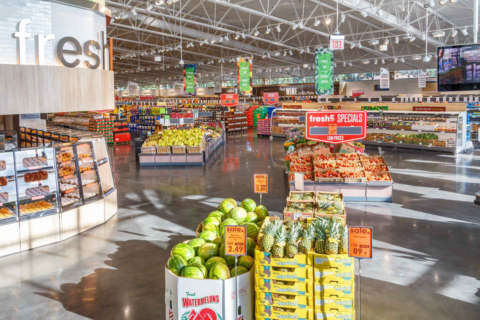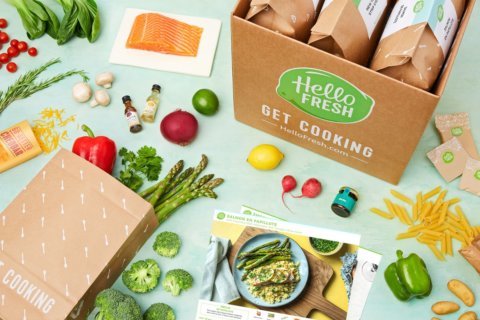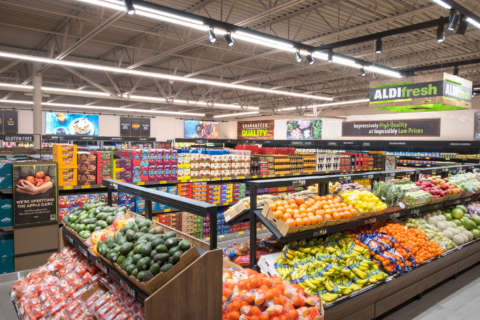WASHINGTON — A 20-percent drop in produce prices in two years is a big stand out in the latest evaluation of D.C.-area grocery store chains done by a local consumers’ group.
“That’s significant, because Whole Foods gets pretty good ratings for quality, quality of produce,” said Kevin Brasler, executive editor at Checkbook.org.
“Now, produce at Whole Food’s costs less than it does at, say, Safeway or Shoppers, which (also) is significant because Safeway and Shoppers don’t get good ratings at all for quality of produce.”
However, average out the prices across all the different categories of food evaluated by Washington Consumer’s Checkbook, and Whole Foods is the highest priced chain in the area.
Where’s Wegmans?
There are fewer than a dozen Wegmans stores in the immediate D.C. area, but Brasler said it can’t be beat.
“Wegmans really represents the one combination of price and quality in this area where you really can have it all,” he said.
For overall customer service and quality of produce and meat, Wegmans ranks “outstandingly high.”
Here are customer rankings for “superior overall”:
- Wegmans — 94 percent
- Whole Foods — 73 percent
- Giant — 39 percent
- Safeway — 30 percent
Wegmans prices aren’t as low as Walmart’s or other price leaders, but they’re comparable to middle-of-the-pack Giant, and well below Safeway prices.
Big-name chains
As far as Safeway and Giant, Brasler said, “both get pretty poor rankings for things like quality of produce, quality of meat and customer service. And neither offer really low prices.”
Safeway prices were among the highest in the area after Whole Foods, which is the highest-priced chain. Giant’s prices run 8 to 10 percent lower than Safeway’s, depending on the store, and are comparable to Harris Teeter and Shoppers.
Lowest prices
A newcomer with just a few area stores joins Walmart and Target for some of the lowest grocery prices.
PriceRite has stores in Woodbridge, Virginia, and in Maryland, in Hyattsville and District Heights. “It has very low prices,” Brasler said.
The grocery game is growing
It wasn’t that long ago that Giant and Safeway were the only big chains in the region before Shoppers and Food Lion arrived.
“These days, there’s lots of choices. There’s Costco, and Sam’s Club, and Walmart and Target,” Brasler said.
The profit margin on food is really small, but Brasler said those stores realize you might buy other stuff during your visit.
Checkbook bases average store prices of 154 common items most people buy, such as produce, meat, dairy, non-perishables and frozen goods.
Campbell’s tomato soup is one example, which can make comparison shopping a challenge among stores that don’t sell national brands. Brasler said that’s not necessarily a problem with Trader Joe’s, because people really like their products that often are comparable or superior to national brands.
Brasler said when the exact same item can’t be compared, “we’re kind of doing the best we can.”
No ‘name brands’ at stores with rock-bottom prices
Brasler describes prices at Aldi as “shockingly low,” but said Aldi and another newcomer from Europe, Lidl, only offer their own products and don’t sell national brands.
“Lidl is beginning to open up stores in the area. Its prices are similar to Aldi’s. Its prices are about 40-percent lower than average,” Brasler said.
Through a special arrangement with Washington Consumers’ Checkbook, WTOP.com readers can see Checkbook ratings on local grocery stores’ price and quality for a limited time.
Consumers’ Checkbook/Center for the Study of Services is an independent, nonprofit consumer organization founded in 1974. It has been an innovator in providing information to help consumers make smarter choices for more than 40 years.









